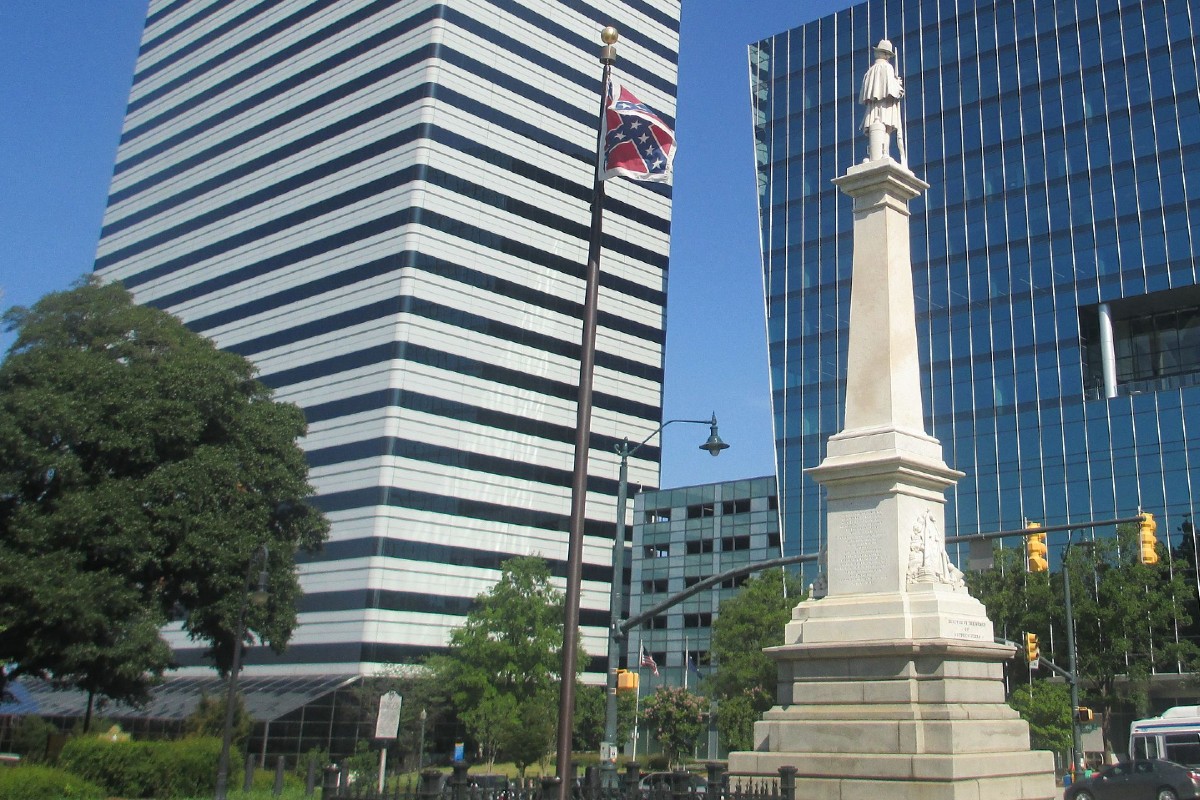
By Andy Brack, editor and publisher | The guy from Long Island smoking a big cigar didn’t think historic statues and memorials should be removed. To do so would be a way for the present generation to try to whitewash the history of the past — to rid these tributes from the state’s collective conscience and keep people from remembering how things were.
 Good point, but what about the people in the state for whom the memorials serve as offensive reminders of an economy built on the backs of their enslaved forefathers? Could the guy see how maintaining memorials might be little more than an attempt by a past generation to remind future generations about white supremacy?
Good point, but what about the people in the state for whom the memorials serve as offensive reminders of an economy built on the backs of their enslaved forefathers? Could the guy see how maintaining memorials might be little more than an attempt by a past generation to remind future generations about white supremacy?
Yep, he could understand that and hadn’t really considered how effigies in stone could channel values of the past as cold reminders to reinforce those values far into the future. But he still didn’t like the idea of taking down statues, even if they were put in a museum.
Let’s turn back the clock. A generation after the Civil War, a monument movement swept through the country. In the North, communities erected statues as tributes to soldiers who fought to protect the republic and maintain American democracy.
Southerners also erected statues, but they served as more than war memorials. They also were symbols that constantly reminded people of white supremacy and the “Lost Cause” of the Confederacy. Interestingly, many Southern statues look remarkably like those in the North. The major difference: the “C.S.” (Confederate States) on belt buckles instead of a “U.S.” (United States). That’s because many Southern memorials were built by factories in New England with prefabricated parts, according to The Washington Post.
Over time, calls grew to remove Confederate symbols in the public sphere. In 1962, South Carolina legislators approved a resolution to fly a Confederate battle flag on the Statehouse dome to commemorate the centennial of the Civil War. Because the legislative resolution didn’t set a time for removing the flag, it stayed up until 2000, when lawmakers hammered out a compromise to move it to be near a monument in front of the Statehouse in Columbia. In 2015, the flag was moved off the Statehouse grounds.
But the 2000 compromise, called the Heritage Act, also included provisions barring removal or alteration of monuments to 10 wars as well as those honoring Native American and African American history. While that might sound tepid at first blush, it was clear the compromise was to keep people’s hands off Confederate monuments because the legislature, which passed the Heritage Act with a simple majority vote, required a two-thirds vote by future legislatures to remove any monument.
And now, as America takes a Memorial Day break to remember heroes who died for the country, South Carolina is still arguing about old wars and sores.
This week, the S.C. Supreme Court heard arguments about the constitutionality of the Heritage Act. Those trying to bat it down argued the two-thirds vote requirement was unconstitutional because it created a tough hurdle for future legislatures to jump to take down a statue or memorial. Others complained the law interfered with “home rule,” or the ability of local governments to deal with local issues.
Some also question whether the issue is even ripe for discussion. They say the legislature hasn’t tested whether a majority, much less a supermajority, wants to repeal the Heritage Act. But others point to how repeal efforts can’t get to a vote because they get stuck in House and Senate committees.
It will be months before the Supreme Court rules on the Heritage Act. While some consider the court almost evenly split between progressives and conservatives, the case before the five justices now is mercurial enough that the outcome is anything but clear.
Let’s hope they don’t kick the can down the road. At a minimum, they should throw out the supermajority voting requirement. Even better would be to let local communities decide what they want to do with their statues.
- Have a comment? Send to: feedback@statehousereport.com.















 We Can Do Better, South Carolina!
We Can Do Better, South Carolina!